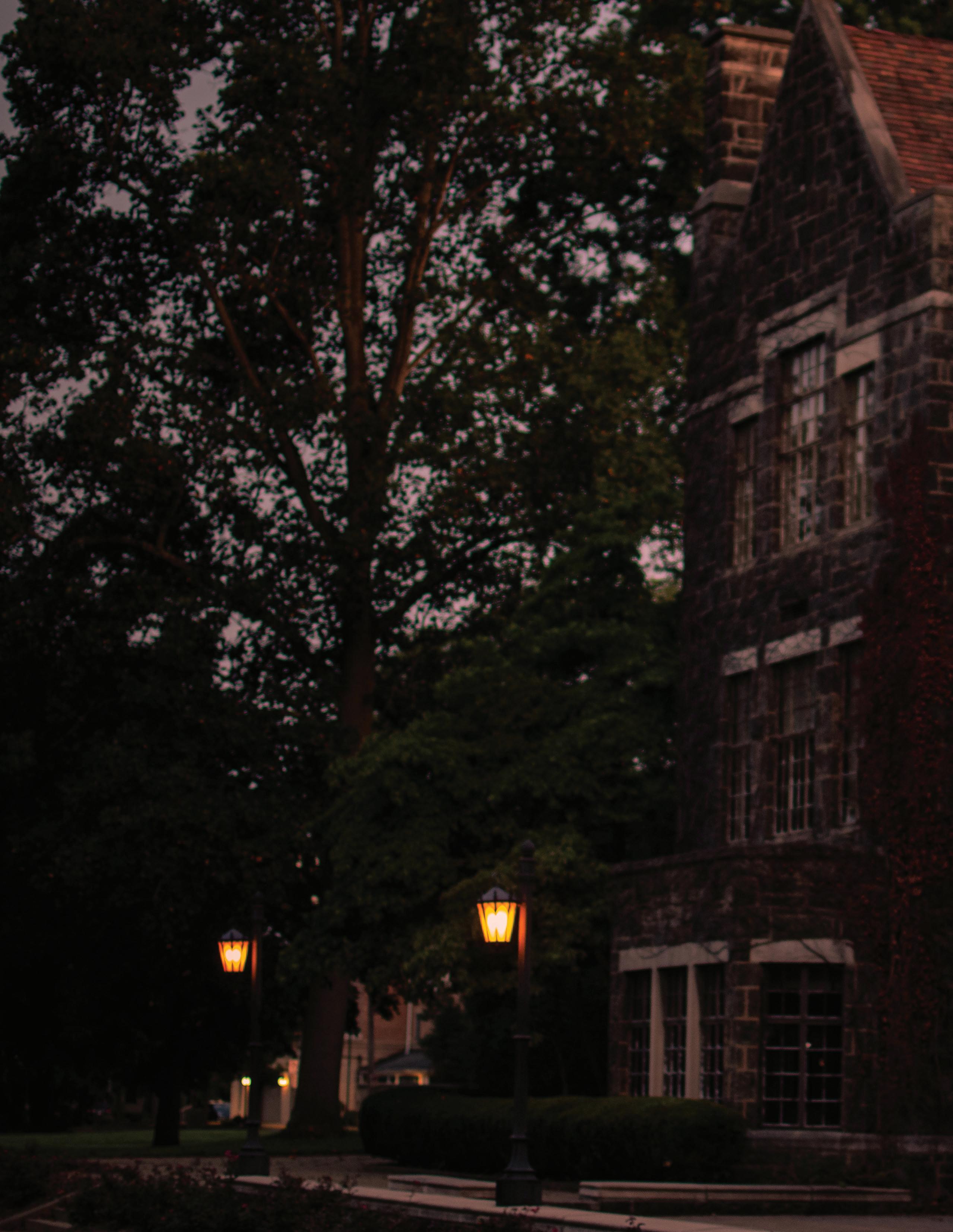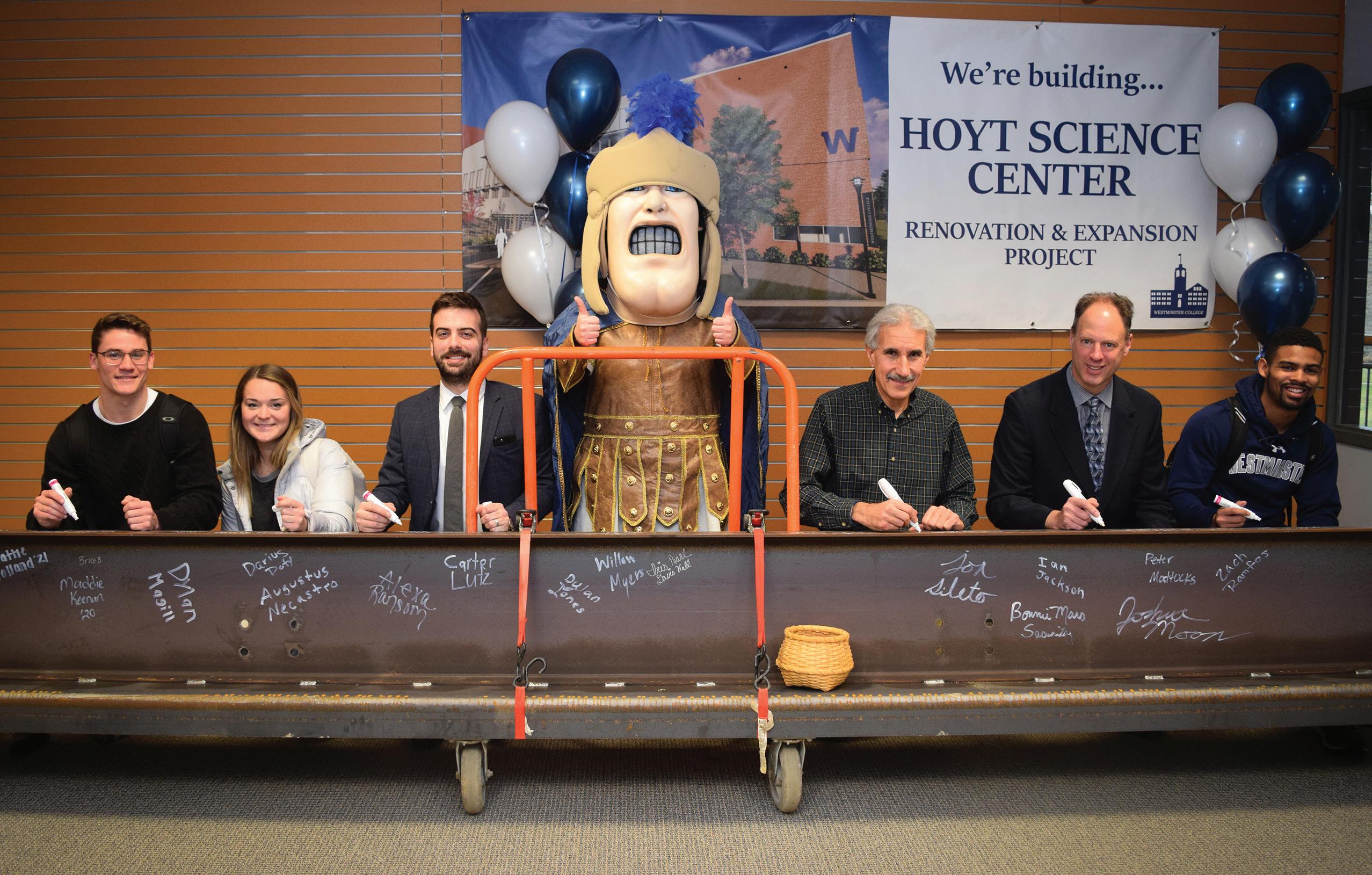
3 minute read
Parting Thoughts: Professor Compares Coronavirus, 1918 Influenza Pandemics
WC MEMORIES PARTING THOUGHTS
A moment in time: Professor compares coronavirus, 1918 influenza pandemics
U.S. National Archives
hen Westminster College history professor
WDr. Timothy Cuff was teaching students about pandemics during the fall semester, he had no way of knowing that just a few months later he’d be in the midst of one.
Disease in America, the Westminster course Cuff has been offering to students for a decade, explores the U.S. experience of particular diseases such as yellow fever, cholera, AIDS and influenza, including the devastating 1918 “Spanish Flu” outbreak that infected 500 million worldwide.
Cuff sees distinct differences and similarities between the 1918 pandemic and what we’re experiencing right now—and says there are lessons to be learned from the past.
The coronavirus we’re currently experiencing doesn’t compare—so far—to that deadly pandemic, which killed between 50 and 100 million people, including 675,000 Americans. But in just a few months the coronavirus has made its way around the globe, claiming the lives of more than 250,000 people worldwide and more than 71,000 in the U.S.
“In 1918, we did not know what ‘viruses’ were—we didn’t even know that they existed—so obviously we didn’t know how they worked,” Cuff said. What was understood was that population density and social interaction seemed to be key— just like today.”
Yet while today our medical response is much more developed and informed—we have the Centers for Disease Control to help educate the public on emerging health threats and issues—our knowledge and understanding of the coronavirus and COVID-19 are still developing.
Today’s immediate response to the coronavirus pandemic mirrors what was happening a century ago: social distancing. People were quarantined, masks were worn, days of prayer were held, and large gathering spaces—theaters, churches, restaurants and bars, and parks—were off limits, Cuff said.
Cuff said there are important take-aways from the 1918 influenza epidemic, and patience tops the list.
“We need to recognize, and be humble about the fact, that now, as was the case in 1918, we don’t know everything about the disease,” Cuff said. “The virus’ behavior and interaction with people is not yet fully understood. That knowledge takes time to develop and that means policy makers need to be given some grace about what they decide to do.”
Cuff also reminds us that viruses—just like humans—are biological creatures simply behaving the way they’re designed.
“We frequently forget that while humans are much more than animals, we are animals,” Cuff said. “We have to eat, breathe, get rid of waste and procreate. We interact with other creatures in the environment that have to do the same. Viruses are a part of this environment just as we are.”
A finally, despite our best efforts, viruses are not going to disappear.
“Viruses mutate, change and can jump from species to species. It’s a fact of life. Humans have created a way of life that easily enables disease to spread in some ways, while ‘disabling’ it in other ways,” Cuff said, adding a view from a textbook he uses in his class, The Deadly Truth: A History of Disease in America by Gerald Grob.
“We will live our lives in balance with disease agents and create opportunities for disease to happen as our societies develop. We will create opportunities for disease even as we seek cures.” S
HELP US TO ACHIEVE OUR FULL $1M MATCH
r

If you have not yet donated to our BRING BACK THE TITANS campaign, an effort to assist students financially impacted by COVID-19, we ask that you JOIN US in achieving our $1M match goal.
TO OUR 850+ DONORS WHO HAVE ALREADY RAISED $1.7 MILLION!
OFFICE OF MARKETING & COMMUNICATION 319 S. MARKET ST. NEW WILMINGTON, PA 16172-0001

RETURN SERVICE REQUESTED










